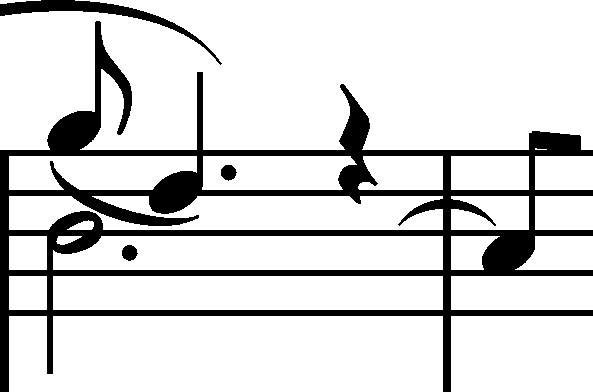



|
b. 4
|
composition: WN 55, Waltz in F minor category imprint: Differences between sources |
||||||
|
b. 4-5
|
composition: Op. 24 No. 2, Mazurka in C major
..
The slur in the R.H., embracing the first four bars, reaches as far as the first note of bar 5 in A. However, connecting the initial four-bar section with the following phrase is very unnatural, both pianistically (change of register and the resulting change of hand position) and musically (evident separation of phrases underlined with the double bar line in bar 5). Therefore, considering the original notation of the slur to be imprecise, we assume that it embraces bars 1-4. This is how it was interpreted in GE (→FE→EE). We come across similar situations in some other places as well, e.g. in bars 22-23 and 49-50. category imprint: Graphic ambiguousness; Differences between sources issues: Inaccurate slurs in A |
||||||
|
b. 4-5
|
composition: Op. 24 No. 1, Mazurka in G minor
category imprint: Differences between sources |
||||||
|
b. 4-13
|
composition: Op. 24 No. 1, Mazurka in G minor
..
In A, the slurs linking b1 with a1 in bars 4-5 and 12-13 have the form of a short slur reaching the quaver a1:
category imprint: Interpretations within context; Source & stylistic information issues: Inaccurate slurs in A |
||||||
|
b. 4-5
|
composition: Op. 24 No. 4, Mazurka in B♭ minor
..
Strictly speaking, the slurs in A may be read in two different ways. The interpretation of GE adopted in the main text underlines both the continuity of the musical thought from the beginning of the work and the moment when the actual theme begins. The same idea was probably behind the imprecise notation of FE, yet it was interpreted differently in EE. category imprint: Graphic ambiguousness; Differences between sources issues: Inaccuracies in FE , Inaccurate slurs in A |







 . One's attention is drawn to the shape of those slurs, typical for Chopin's ties.
. One's attention is drawn to the shape of those slurs, typical for Chopin's ties.

